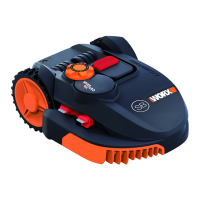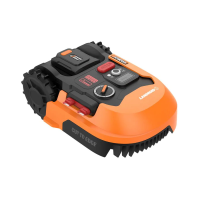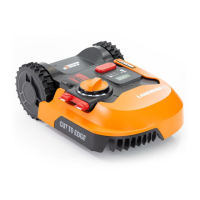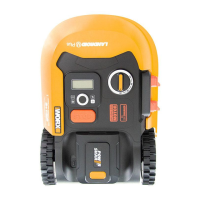7
EN
35% (20°)
In the case of large bumps (higher than 2cm) or dips (wider than
10cm and deeper than 2.5cm), please consider if the blades
would touch the ground or if Landroid
®
would stuck on them;
if this is the case, either make the inclines smoother or exclude
these areas from your Landroid
®
’s operation.
Depressions and bumps
Your Landroid
®
has the ability to safely climb slopes up to 35%
(20°), so just avoid areas steeper than this.
So the slope would be:
35cm (Elevation)
100cm (Length)
=35% (slope)
Slopes
The Upper Boundary Wire should NOT be placed on slopes
steeper than 35% (20°). The Upper Boundary Wire should have
a distance of at least 26cm between any obstacles. The Lower
Boundary Wire should NOT be placed on slopes steeper than
17% (10°). The Lower Boundary Wire should have a distance of
at least 40cm between any obstacles when it is positioned on
a slope that is 17%.
NOTE: The lower boundary wire cannot be laid across a slope
steeper than 17%, or Landroid
®
will slip and cross outside the
wire, especially when the grass is wet.
Placement of Boundary Wire on slopes
Upper boundary wire
Lower boundary
Wire
Lower boundary
Wire
**How to calculate the slope of your lawn?

